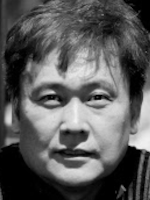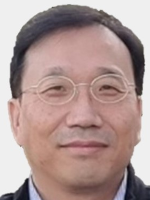
Suwon, South Korea - October 29, 2024
LA VIE D'OR
141-39 Botong-ri Jeongnam-myeon Hwaseong-si
Suwon-si, Gyeonggi-do, South Korea
TEL 031.352.7150
TestConX, over the course of its twenty-five-year history, has established itself as the preeminent event for test consumables, test cell integration, and test operations. The program scope includes packaged semiconductor “final” test, burn-in, system level test, and beyond to encompass all practical aspects of electronics testing such as validation, advanced packaging testing, module test, and finished product test.
Please join us for our 2nd annual TestConX Korea! Don’t miss this opportunity to be part of TestConX as we connect a larger community of test professionals and to participate in this excellent event!
For companies interested in exhibiting or sponsoring please see opportunities below.
Tuesday Program SINTEX Convention Center
8:30
“첨단 반도체 패키지 기술 동향”
Abstract (English)
With the increasing utilization of artificial intelligence such as Chat GPT, the amount of data used in the system is increasing rapidly. Semiconductor technology to respond to this data usage has already reached its limit with the scale-down of the existing method of chip technology, and semiconductor package technology allows the system to meet the necessary requirements of the system, which increases the importance of semiconductor package technology.
Semiconductor package technology has been developed in consideration of high speed, improved heat dissipation, stacking , high reliability, miniaturization, low cost, and environmental improvement, and advanced semiconductor package technology is a technology that satisfies these technology trends, and wafer-level packages, stack packages, and system-in-packages are referred to as advanced semiconductor package technologies. In this course, I will explain the definition and technology trends of these advanced semiconductor packages.
초록 (Korean)
Chat GPT 등 인공지능의 활용이 늘어나면서 시스템에서 사용하는 data의 양은 급격하게 증가하고 있다. 이러한 data 사용량을 대응하기 위한 반도체 기술은 기존의 방식인 칩 기술의 스케일 다운으로는 이미 한계에 도달하였고, 반도체 패키지 기술을 통하여 시스템에서 필요한 요구사항을 만족시킬 수 있게 되었고, 이 때문에 반도체 패키지 기술의 중요성은 커지게 되었다.
반도체 패키지 기술은 고속화, 열방출 향상, 적층, 고신뢰성, 소형화, 저비용, 환경 개선 등을 고려하여 개발되어 왔고, 첨단 반도체 패키지 기술은 이러한 기술 트렌드를 잘 만족시키는 기술로서 웨이퍼 레벨 패키지, 적층 패키지, 시스템 인 패키지가 첨단 반도체 패키지 기술로 언급되고 있다. 본 과정에서는 이 기술들의 정의와 기술 트렌드에 대해서 설명하려 한다.

Dr. Minsuk Suh received his bachelor’s, master’s and doctoral degrees of material science and engineering from KAIST. More than 20 years, he involved in the development and mass production of RDL, Flip chip, WLCSP and TSV including HBM at SK hynix. At now, he is the leader of R&D center in Camtek Korea. In 2020, based on over 20 years of experience in the package industry, he wrote a book, ‘Package and Test that adds value to Semiconductor’, for package engineers as well as engineers at equipment, materials, and students studying packages.
10:30
10:45
“AI를 활용한 테스트 엔지니어링의 부상 ‘도전과제를 기회로 바꾸다’”
Abstract - Biography (English)
This keynote presents a pioneering approach in semiconductor testing, where Artificial Intelligence (AI), specifically Large Language Models (LLMs) like GPT-4, is integrated with the expertise of test engineers. This collaboration represents a significant advancement in innovation, efficiency, and problem-solving within the industry, leading to higher quality work product, faster time to market and enhanced productivity for engineers.
We illustrate this approach through multiple case studies where the AI assists engineering with: Analyzing semiconductor related data, Developing multi-stack software code for a special engineering project, Analyzing test engineering images, Algorithm development, and a Multi-agent collaboration applied across a multi-discipline engineering team.
Central to this effort is the use of GPT-4 Turbo and GPT-4o, which aids test engineers in code development, debugging, trouble shooting, and image and data analysis offering expert recommendations to improve quality, efficiency, productivity and project outcomes. This highlights the transformative potential of AI in refining testing methodologies and enhancing the role of test engineers as innovators.
As semiconductor testing faces increasing complexities, the synergy between AI and human expertise emerges as a vital solution. This keynote aligns with the forward-looking vision of TestConX, urging the semiconductor community to embrace AI-human collaboration as a key driver of the future of test engineering.
Keith Schaub is a seasoned expert in the semiconductor test industry, currently serving as Vice President of Technology and Strategy at Advantest America, Inc. With a career spanning over three decades, Keith has been at the forefront of integrating AI into semiconductor testing, revolutionizing the industry. He holds multiple patents, has founded a startup, and authored key publications on RF and wireless communications. Keith is also the host of the popular Advantest Talks Semi podcast, where he shares insights and explores emerging trends in the semiconductor world. As a respected speaker and author, Keith is known for his strategic insights and innovative solutions in the semiconductor test industry.
초록 - 전기 (Korean)
이 기조연설에서는 반도체 테스트 분야에서 인공지능(AI), 특히 GPT-4와 같은 대형 언어 모델(LLM)을 활용한 혁신적인 접근 방식을 소개합니다. 이러한 AI와 테스트 엔지니어의 전문성 결합은 산업 내에서 혁신, 효율성, 문제 해결 능력을 크게 향상시키며, 이를 통해 더 높은 품질의 제품을 더 빠르게 시장에 출시하고, 엔지니어들의 생산성을 높일 수 있게 되었습니다.
여러 사례 연구를 통해 AI가 반도체 데이터 분석, 특정 엔지니어링 프로젝트를 위한 다중 스택 소프트웨어 코드 개발, 테스트 엔지니어링 이미지 분석, 알고리즘 개발, 그리고 다학제적 엔지니어링 팀 내 다중 에이전트 협업에서 어떻게 엔지니어들을 지원하는지 설명합니다. 특히 GPT-4 Turbo와 GPT-4o 모델의 활용이 중심에 있으며, 이 모델들은 테스트 엔지니어들이 코드 개발, 디버깅, 문제 해결, 이미지 및 데이터 분석을 수행하는 데 있어 전문가 수준의 권장 사항을 제공하고, 품질과 효율성, 생산성, 그리고 프로젝트 결과를 개선하는 데 기여합니다. AI의 도입은 테스트 방법론을 정교화하고 테스트 엔지니어의 역할을 강화하는 중요한 요소로 작용하고 있습니다.
반도체 테스트의 복잡성이 증가함에 따라, AI와 인간 전문 지식 간의 시너지가 중요한 해결책으로 자리잡고 있습니다. 이번 기조연설은 이러한 AI-인간 협업이 테스트 엔지니어링의 미래를 이끄는 핵심 동력이 될 것임을 강조합니다.
Keith Schaub는 반도체 테스트 산업에서 오랜 경험을 쌓은 전문가로, 현재 Advantest America, Inc.에서 기술 및 전략 부문 부사장으로 재직 중입니다. 30년 이상의 경력을 통해 Keith는 반도체 테스트에 AI를 통합하여 업계를 혁신해 왔습니다. 그는 다수의 특허를 보유하고 있으며, RF 및 무선 통신에 관한 주요 출판물을 저술한 바 있습니다. 또한, Keith는 반도체 산업의 최신 동향을 탐구하는 인기 팟캐스트인 "Advantest Talks Semi"의 진행자로도 잘 알려져 있습니다. Keith는 반도체 테스트 산업에서 전략적 통찰력과 혁신적 솔루션으로 널리 인정받는 연사이자 저자입니다.


11:45
“아시아 테스트 및 번인 소켓 공급업체의 향후 전망은?”
Abstract - Biography (English)
Asia has long been the leading center for semiconductor testing. In fact, until recently, the region's test houses steadily eroded the relatively small share of tests still being done in Europe, the US, and the rest of the world. Asian socket suppliers have done well in serving their home markets, and together, they now account for over 75% of worldwide socket revenues. This situation is changing as the various chip acts and the re-evaluation of chipmakers' manufacturing strategies impact the test landscape. This presentation explains how semiconductor testing is shifting regionally and within regions and what that means for burn-in and test socket suppliers.
John West is a Senior Director of the Semiconductor Subsystems and Test Division at Yole Group. He has over 20 years of industry experience and a successful track record in various strategy and consulting projects. John has a Bachelor's degree in Medical Physics from King's College London and an MBA from Cranfield School of Management.
초록 - 전기 (Korean)
아시아는 오랫동안 반도체 테스트의 글로벌 중심지로 자리 잡아 왔습니다. 최근까지도 아시아의 테스트 업체들은 유럽, 미국 및 기타 지역에서 이루어지던 테스트 시장 점유율을 꾸준히 잠식해왔으며, 현재 이들은 전 세계 소켓 매출의 75% 이상을 차지하고 있습니다.
하지만, 반도체 관련 법안들의 시행과 반도체 제조업체들의 제조 전략 재평가가 진행됨에 따라 반도체 테스트 시장이 변화하고 있습니다. 이번 강연에서는 반도체 테스트의 지역적 변화와 그로 인해 번인 및 테스트 소켓 공급업체들이 직면할 기회와 도전에 대해 다룰 것입니다.
JohnWest는 Yole Group의 Semiconductor Subsystems and Test Division의 Senior Director이다. 그는 20년 이상의 업계 경험과 다양한 전략 및 컨설팅 프로젝트에서 성공적인 실적을 보유하고 있다. John은 King's College London에서 의료 물리학 학사 학위를 취득했으며 Cranfield School of Management에서 MBA를 취득했다.

12:15
Lunch and EXPO
Enjoy the delicious hot buffet lunch and networking time. Then take the time to explore the TestConX EXPO. There will be many great exhibits to connect electronic test professionals to solutions. You will be certain to see something new or meet someone new. As attendees to TestConX know, there is always excellent food, drinks, and time for attendees to network with exhibitors! TestConX EXPO will open at 12:15 and will remain open throughout the afternoon until 18:00
13:30
“적용 가능한 DIE Level의 Test Handler 소개”
Abstract - Biography (English)
This is equipment that tests the electrical characteristics of the die by dicing the HBM device in a wafer state, loading each die, and then contacting the probe on the probe card.
Each die is mounted on a hot and cold chuck, and then each die is sequentially aligned using an ultra-precision alignment machine and Vision Align algorithm technology.
Du-Chul Kimis an expert with over 30 years of experience in the semiconductor manufacturing equipment industry. He has a proven track record of localizing various equipment, including TR equipment, LSI equipment, and MEMORY TEST equipment. Currently, he is developing HBM TEST equipment, taking on new challenges in emerging markets. As the CEO of AMT Co., Ltd., he leads the company with a focus on innovative technology development and global market expansion. Du-Chul Kim's management philosophy is centered on customer satisfaction, and he is dedicated to enhancing the quality and performance of cutting-edge semiconductor manufacturing equipment.
초록 - 전기 (Korean)
이 설비는 Wafer 상태의 HBM 제품을 다이(Die)로 분리하고, 각각의 다이를 로딩하여 프로브카드에 접촉시키는 방식으로 다이의 전기적 특성을 테스트할 수 있습니다.
초정밀 정렬 머신과 Vision Align 알고리즘 기술을 통해 핫/콜드 척에 장착된 각각의 다이들을 순차적으로 정렬합니다.
김 두철 반도체 제조 장비 분야에서 30년 이상의 경력을 보유한 전문가입니다. TR 장비, LSI 장비, MEMORY TEST 장비 등 다수 설비를 국산화한 경력이 있습니다. 현재는 HBM TEST 장비를 개발하여 새로운 시장에 도전을 하고 있습니다. 그는 AMT 주식회사의 대표이사로 재직 중이며, 혁신적인 기술 개발과 글로벌 시장 확장을 통해 회사를 선도하고 있습니다. 김두철 대표이사는 고객 중심의 경영 철학을 바탕으로, 최첨단 반도체 제조 장비의 품질과 성능 향상에 주력하고 있습니다.

Abstract - Biography (English)
This presentation addresses the importance of reconfiguring the wafer test system layout to enhance density. As semiconductor production continues to grow, ensuring quality reliability is increasingly critical. Given the challenges of expanding physical space, this solution provides a viable approach within the constraints of the current floor area.
Jeremy Kim Biography: 2018: Holding bachelor of mechanical engineering at Hansung University. 2018: Joined Semics as a mechanical engineer. 2018 ~2019: Design prober-tester interface (Semics prober with memory tester) & wafer chuck module(additive function). 2019 ~2024: Developing prior technology, new product concept design & product manager.
摘要 (Chinese)
본 발표에서는 웨이퍼 테스트 시스템의 밀도를 향상시키기 위해 시스템 구성을 재배치하는 것의 중요성을 다룹니다. 반도체 생산이 증가함에 따라 품질 신뢰성을 확보하는 것의 필요성 또한 중요해지고 있습니다. 건물 확장이 어려운 상황에서, 이 솔루션은 기존 공간 제약 내에서 유용한 접근법을 제시합니다.

“배터리 관리 시스템을 위한 자동화 테스트 장비: 과제 및 솔루션”
Abstract - Biography (English)
This presentation discusses the challenges of automated test equipment (ATE) for testing battery management systems (BMS) in electric vehicles (EV) and introduces novel system-architectural solutions based on highly integrated system-on-a-chip (SOC) parametric measurement units (PMUs).
BMS measure temperature, voltage, and current in the battery-pack and balance battery cell charge. However, ATE for testing BMS in EVs has several challenges: Since a BMS device-under-test (DUT) may support a battery module with a series-connected stack of 16 or more Lithium-Ion cells, traditional ATE based on discrete devices has low density since it requires a high number of voltage and/or current source stimuli to emulate individual cell outputs. Second, since the DUT needs to be tested to microVolt (uV) and microAmpere (uA) accuracy, the ATE needs low-noise, precision voltage, and current sources which increase implementation complexity, size, and cost of discrete solutions. Moreover, the test stimuli to the BMS-DUT may require 100’s of Volts common-mode voltage relative to the channel differential voltage. Finally, since discrete-device-based ATE is not readily scalable, testing various BMS and battery-module configurations requires custom designs which take longer to build.
As a solution to the above challenges, this work first presents a series-connected stack of floating-ground PMUs which connect to the DUT and test if its cell-voltage (CV) and cell-balance (CB) terminal characteristics meet their specifications. The floating-ground-based topology meets both the high common-mode and the uV/uA precision requirements noted above. Each PMU has an isolated power supply for galvanic isolation from the system input power supply. In this configuration, digital-to-analog converters (DACs) integrated in each PMU drive the DUT CV and CB terminals in force-voltage (FV) or force-current (FI) mode and validate the DUT battery-cell measurement, input-current, and CB switch-transistor on-resistance capabilities from the DUT measure-current (MI) and measure-voltage (MV) responses. Each PMU FV or FI stimulus can be independently programmed by ATE software, thereby enabling test coverage of any battery cell condition. Following the above discussion, a second topology is presented which extends the testable DUT voltage range up to its absolute maximum rating by connecting each PMU in series with a high-voltage common-mode (CM), efficient switching-mode-power-supply (SMPS). The system is reconfigurable between the first high-precision and the second extended-voltage-range topologies using switching matrices. These switching matrices may be discrete to support more flexibility or integrated with the PMU, e.g., as co-packaged Micro-Electromechanical Systems (MEMS) switches. At the circuit level, integrated clamps in the PMU limit the voltage and current across the DUT. Additionally, each PMU has alarm features which detect temperature, voltage, current, and force/sense Kelvin faults.
BMS future trends include support for higher-voltage battery-packs, higher precision, various pack topologies as well as several new functions including active management and active cell balance. The presented architecture is scalable and readily addresses these trends because of design choices such as the integrated PMU SOC, series-connected PMUs / stacking of PMUs on CM power supply, and reconfigurability between the two topologies via the MEMS switching-matrix.
Sandeep D’Souza is a Principal Engineer with ElevATE Semiconductor working on integrated circuit and system design for Automated Test Equipment (ATE) applications. He has 24 years’ experience in the semiconductor industry on ATE, Semiconductor Device Modeling, Analog, Mixed-Signal and RF IC design, and systems design for Ultrasonic Sensor, Haptics, Audio and Touch-Controller applications. Prior to ElevATE, he was with Qualcomm, Semtech (Jariet), Skyworks and Conexant. He has 8 publications and 40+ issued / pending patents. He received his Bachelor, Master and PhD degrees all in Electrical Engineering from IIT Bombay, Purdue University and UCLA respectively.
초록 - 전기 (Korean)
이 프레젠테이션에서는 전기 자동차(EV)의 배터리 관리 시스템(BMS)을 테스트하기 위한 자동 테스트 장비(ATE)의 과제를 논의하고 고도로 통합된 시스템 온 칩(SOC) 파라메트릭 측정 유닛(PMU)을 기반으로 하는 새로운 시스템 아키텍처 솔루션을 소개합니다.
BMS는 배터리 팩의 온도, 전압 및 전류를 측정하고 배터리 셀 충전의 균형을 맞춥니다. 그러나 전기차에서 BMS를 테스트하기 위한 ATE에는 몇 가지 과제가 있습니다: 테스트 중인 BMS 장치(DUT)는 16개 이상의 리튬 이온 셀로 구성된 직렬 연결 스택으로 배터리 모듈을 지원할 수 있기 때문에 개별 셀 출력을 에뮬레이션 하는 데 많은 수의 전압 또는 전류원의 자극이 필요하기 때문에 개별 장치 기반의 기존 ATE는 밀도가 낮습니다. 둘째, DUT는 마이크로 볼트(uV) 및 마이크로 암페어(uA) 정확도에 맞게 테스트해야 하므로 ATE는 저 잡음, 정밀 전압 및 전류원이 필요하므로 구현 복잡성, 크기 및 비용이 증가합니다. 또한 BMS-DUT에 대한 테스트 자극에는 채널 차동 전압에 비해 100V의 볼트 공통 모드 전압이 필요할 수 있습니다. 마지막으로, 개별 장치 기반 ATE는 쉽게 확장할 수 없기 때문에 다양한 BMS 및 배터리 모듈 구성을 테스트하려면 구축하는 데 더 오랜 시간이 걸리는 맞춤형 설계가 필요합니다.
위의 과제에 대한 해결책으로, 이 작업은 먼저 DUT에 연결하고 셀 전압(CV) 및 셀 균형(CB) 단자 특성이 사양을 충족하는지 테스트하는 플로팅 그라운드 PMU의 직렬 연결 스택을 제시합니다. 플로팅 그라운드 기반 토폴로지는 위에서 언급한 높은 공통 모드 및 uV/uA 정밀도 요구 사항을 모두 충족합니다. 각 PMU에는 시스템 입력 전원 공급 장치로부터 갈바닉을 분리하기 위한 격리된 전원 공급 장치가 있습니다. 이 구성에서 각 PMU에 통합된 디지털-아날로그 변환기(DAC)는 힘 전압(FV) 또는 힘 전류(FI) 모드에서 DUT CV 및 CB 단자를 구동하고 DUT 배터리-셀 측정, 입력 전류 및 CB 스위치-트랜지스터 온-저항 기능을 DUT 측정 전류(MI) 및 측정 전압(MV) 응답에서 검증합니다. 각 PMU FV 또는 FI 자극은 ATE 소프트웨어로 독립적으로 프로그래밍할 수 있으므로 모든 배터리 셀 조건에 대한 테스트 커버리지를 가능하게 합니다. 위의 논의에 이어, 각 PMU를 고전압 공통 모드(CM), 효율적인 스위칭 모드-전력-공급장치(SMPS)와 직렬로 연결하여 테스트 가능한 DUT 전압 범위를 절대 최대 등급까지 확장하는 두 번째 토폴로지가 제시됩니다. 이 시스템은 스위칭 매트릭스를 사용하여 첫 번째 고정밀 토폴로지와 두 번째 확장 전압 범위 토폴로지 사이에서 재구성할 수 있습니다. 이러한 스위칭 매트릭스는 더 많은 유연성을 지원하기 위해 개별적이거나 공동 패키징된 마이크로-전기기계 시스템(MEMS) 스위치와 같이 PMU와 통합될 수 있습니다. 회로 수준에서 PMU의 통합 클램프는 DUT 전체의 전압과 전류를 제한합니다. 또한 각 PMU에는 온도, 전압, 전류 및 힘/감지 켈빈 결함을 검출하는 알람 기능이 있습니다.
BMS의 미래 트렌드에는 고전압 배터리 팩, 더 높은 정밀도, 다양한 팩 토폴로지 지원뿐만 아니라 능동형 관리 및 능동형 셀 밸런스를 포함한 몇 가지 새로운 기능이 포함됩니다. 제시된 아키텍처는 확장 가능하며 통합 PMU SOC, 직렬 연결 PMU / CM 전원 공급 장치의 PMU 스태킹, MEMS 스위칭 매트릭스를 통한 두 토폴로지 간의 재구성 가능성과 같은 설계 선택으로 인해 이러한 추세에 쉽게 대처할 수 있습니다.
Sandeep D'Souza 는 ElevATE Semiconductor의 수석 엔지니어로, 자동화 테스트 장비(ATE) 애플리케이션을 위한 집적 회로 및 시스템 설계를 담당하고 있습니다. 그는 ATE, 반도체 장치 모델링, 아날로그, 혼합 신호 및 RF IC 설계, 초음파 센서, 햅틱, 오디오 및 터치 컨트롤러 애플리케이션을 위한 시스템 설계에 대해 반도체 업계에서 24년의 경험을 가지고 있습니다. ElevATE에 입사하기 전에는 Qualcomm, Semtech(Jariet), Skyworks 및 Conexant에서 근무했습니다. 그는 8 개의 출판물과 40 + 발행 / 출원 중인 특허를 보유하고 있습니다. 그는 IIT 봄베이, 퍼듀 대학교 및 UCLA에서 각각 전기 공학 학사, 석사 및 박사 학위를 받았습니다.

13:30
“고성능 반도체 테스트 장비 및 보드의 개발을 위한 전자기-열 시뮬레이션 방법 ”
Abstract (English)
Recently, semiconductor testing has become increasingly polarized. One field evaluates semiconductors that operate at Low Operating Voltages and High Frequencies, and the other field evaluates High-Power semiconductors. The field of evaluating Low-Voltages and High-Frequency semiconductors has a very big issue regarding SI/PI and High-Speed Interface for test equipment and boards. And the common issue in both fields is to establish countermeasures for the generated heat. This session introduces the basic understanding and methods of Electromagnetic-Thermal simulation to solve these issues.
초록 (Korean)
최근 반도체 테스트는 양극화가 커지고 있다. 한분야는 낮은 동작 전압과 고주파수로 동작하는 반도체를 평가하는 것이고, 다른 분야는 대전력 반도체를 평가하는 것이다. 저전압과 고주파수 반도체를 평가하는 분야는 테스트 장비 와 보드에 대한 SI/PI와 High Speed Interface에 대한 이슈가 매우 크다. 그리고 두분야의 공통적인 이슈는 발생되는 열에 대한 대책을 세우는 것이다. 본 세션은 이러한 이슈를 해결하기 위한 전자기-열 시뮬레이션에 대한 기본적인 이해와 방법을 소개하는 것이다.

숭실대학교 대학원 전자공학부 공학박사, 반도체 및 자성소자 전공(2006) 전자기장 해석 경력 : 1994~현재 2015~ : 태성에스엔이 기술본부 전기전자 분야 선임팀장 ~2015 : 코리아인스트루먼트 기술연구소 팀장 ~2012 : 솔브레인멤시스(구 파이컴) 기술연구소 선행개발 팀장
Soongsil University Graduate School, Department of Electronic Engineering, Ph.D. in Semiconductor and Magnetic Devices (2006)
Electromagnetic Field Analysis Experience: 1994~present
2015~: Senior Team Leader, Electrical and Electronic Division, Taesung S&E Technology Headquarters
~2015: Team Leader, Korea Instrument Technology Research Institute
~2012: Team Leader, Advanced Development Team, Soulbrain Memsys (former Phicom) Technology Research Institute
15:00
Break & Networking
Enjoy time to meet with the presenters and network while refreshments are served.15:30
“ ”
“교체 가능한 Top Plunger의 구조를 가진 새로운 Pogo Socket”
Abstract - Biography (English)
In the current semiconductor package testing, due to the damage to the tip (Top Plunger) of the pin that contacts the package and the transfer of Sn (tin), the characteristics of the socket deteriorate, leading to the replacement of the entire pin and socket.
In the case of the Tango socket, it was confirmed that apart from damage to the tip of the pin, other parts of the Pogo pin do not have any issues. Therefore, the socket was designed so that only the pin tip could be replaced, aiming to reduce testing costs and improve the ease of maintenance.
Kang Yeesun Position: Deputy Manager / Product Engineer / Sr. Manager. Department: AP Division, Product Development Team. Summary of Experience: Over 11 years at TSE, responsible for the development of Pogo socket products and processes. Areas of Expertise: New product development (Tango socket, Coaxial socket, etc).
Kang Yeesun has been responsible for the development of Pogo socket products and processes at TSE for over 11 years and has led the development of new products such as Tango socket and Coaxial socket, who aims to share a new approach to the existing Pogo pin through the Tango socket.
초록 - 전기 (Korean)
현재 반도체 Package를 Test함에 있어서 사용되는 Pogo Socket의 경우 Package와 접촉되는 Pin 끝단 (Top Plunger)의 손상과 Sn 전이로 인해 Socket 특성이 악화되어 Pin & Socket 전체를 교체하고 있다.
Tango Socket의 경우 Pin 끝단의 손상 외에 Pogo Pin을 구성하는 다른 Part는 문제없다는 점을 확인하여 Pin 끝단만을 교체할 수 있도록 Socket을 구성함으로 Test 비용 절감과 Maintenance 용이성을 증대 시키고자 하였다.
이름 : 강이선 직책 : 차장 / Product Engineer / Sr. Manager 부서 : AP 사업부 제품 개발팀 경력요약 : TSE에서 11년 넘게 Pogo socket 제품 및 공정 개발업무를 담당
전문분야 : Tango socket, Coaxial socket 등 신제품 개발 강이선은 TSE 에서 11년 넘게 Pogo socket 제품 및 공정 개발업무를 담당해 왔으며, Tango socket, Coaxial socket 등 신제품 개발을 주도했습니다. 기존 Pogo pin에 대한 새로운 접근 방식인 Tango socket에 대해 공유하고자 합니다.

“ 테스트 소켓 & 웨이퍼 프로브 카드용 클린패드”
Abstract (English)
Device testing is a critical process for determining the electrical and functional reliability of chips at the wafer/device level. The test probe serves as the contact interface between DUT and the tester, making contact with the pads/bumps of the DUT to form a connection for testing.
During testing, oxides/debris accumulate on the test probe, affecting electrical conductivity and causing overkill issues. It is important to implement a cleaning procedure during the test process to minimize the accumulation of oxides or contaminants to ensure high reliability.
Clean pad/clean wafer effectively cleans the probe without deforming the probe tip with its cushion structure and special cleaning resin material.
초록 (Korean)
디바이스 테스트는 웨이퍼/디바이스 레벨에서의 칩의 전기적 및 기능적 신뢰성을 결정하기 위한 중요한 프로세스이며 테스트 프로브는 DUT와 테스터 사이의 접촉 인터페이스 역할을 하며 DUT의 패드/범프에 접촉하여 테스트를 위한 연결을 형성합니다.
테스트를 하는 동안 테스트 프로브에 산화물/찌꺼기가 쌓여 전기 전도도에 영향을 미치고 과검문제가 발생하게 됩니다. 산화물 또는 오염물이 쌓이는 것을 최소화하도록 테스트 프로세스 중에 클리닝 절차를 구현하는 것이 높은 신뢰성을 보장하는 데 있어서 중요합니다.
클린 패드/클린 웨이퍼는 쿠션 구조와 특수한 클리닝 수지 소재로 프로브 팁의 변형 없이 효과적으로 프로브를 클리닝합니다.

“피치변환 및 미세 피치 PCB 솔루션”
Abstract - Biography (English)
The miniaturization of advanced system semiconductor wafers and packages demands new PCB technologies. Wafer die bumps, which range from thousands to tens of thousands per product, have fine pitches of 40μm to 150μm. This presentation covers the design and manufacturing solutions for Space Transformer PCBs that facilitate pitch conversion between the Probe Load Board and probe pins in Vertical Probe Cards for wafer testing. Additionally, it will address high-speed signal transmission testing and Surface Mount Technology (SMT)
In-Pyo Lee has over 20 years of experience in the semiconductor testing field, specializing in the development of Test Interface Boards for both memory and non-memory semiconductors. Currently, he is responsible for the development of Test Interface Board technology at TSE.
He has developed many test solution interface boards with a focus on high-speed, low-power, high-temperature, and fine-pitch requirements. He aims to share the latest technological trends in PCBs, which are the core materials of Test Interface Boards, under the topic of "Space Transformer & Fine Pitch Solution."
초록 - 전기 (Korean)
고성능 시스템 반도체의 웨이퍼 및 패키지의 미세화는 새로운 PCB 기술을 요구합니다. 웨이퍼 다이의 범프는 제품에 따라 수천 개에서 수만 개까지 구성되며, 미세 피치는 40μm에서 150μm에 이릅니다. 이 발표에서는 웨이퍼 테스트용 Vertical Probe Card에서 Probe Load Board와 프로브 핀 간의 피치 변환을 가능하게 하는 Space Transformer PCB의 설계 및 제조 솔루션을 소개합니다. 또한 고속 신호 전송 테스트 및 표면 실장 기술(SMT)에 대해서도 다룹니다
이인표는 20여 년간 반도체 테스트 분야에서 경력을 쌓아왔으며, 메모리 및 비메모리 반도체의 Test Interface Board 개발에 전문성을 가지고 있습니다.
현재 TSE에서 Test Interface Board 기술 개발을 담당하고 있습니다.
고속, 저전력, 고온, 미세 피치에 중점을 둔 다수의 테스트 솔루션 인터페이스 보드 개발 경험이 있으며, "Space Transformer & Fine Pitch Solution"에 관한 주제로 Test Interface Board의 핵심 자재인 PCB에 대한 기술 트렌드를 공유하고자 합니다.

17:00
Lucky Draw
Door prizes for randomly selected attendees
(Must be present to win / void where prohibited)